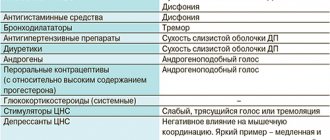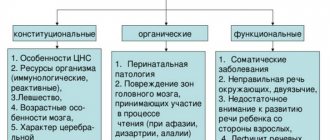Knowing the range of your own voice is useful for every musician. We are talking not only about vocalists, but about all people involved in music - composers, guitarists, pianists. Knowing the range helps you write music in comfortable keys (or choose minuses in the desired keys), as well as rework vocal parts in such a way as not to tear the ligaments. SAMESOUND.RU explains how to determine your vocal range in order to correctly describe your own vocals.
How to describe your own voice?
Let's imagine that a musician responded to an ad from a local band looking for a guitarist with a good voice. The band members ask the musician what kind of voice he has. How to answer this question?
There are three ways to describe your vocals:
- Compare your voice with another vocalist. This method is obviously a failure, since no one will believe that you sing just like Robert Plant;
- Give a general description of your vocals. For example, say that you are a lyric baritone, rock tenor or rock alto. This description is easier to understand, but does not provide useful information;
- Talk about the range of your voice, noting the lowest and highest notes you can sing. This is the most informative and normal way to describe vocals.
Despite the clarity of the third method, musicians often give incomplete information about the vocal range. Many students who come to me say that they can sing all the notes from low C to B flat, but do not specify which octaves they are talking about.
Method 2: ioBit
The ioBit online service is suitable only in cases where you need to check how the microphone responds to voice, but without listening to it.
Go to the ioBit online service
- On the ioBit home page, click on the microphone icon.
- Allow access to your device so the site can capture audio.
- If the bar does not move, it means that the voice is not being recorded on the microphone.
- As soon as you see fluctuations when speaking at different volumes or simply hitting the microphone with your finger, it means the recording is going great.
How to determine your voice range?
To accurately determine the range of your voice, it is enough to refer to music theory and the octave system of grouping notes. All sounds that we can use in music and that are distinguishable by the human ear are divided into 9 octaves. Each C note has a number attached to it, indicating the octave it belongs to.
| Number | Octave name |
| 0 | Subcontractave |
| 1 | Contractave |
| 2 | Major octave |
| 3 | Small octave |
| 4 | First octave |
| 5 | Second octave |
| 6 | Third octave |
| 7 | Fourth octave |
| 8 | Fifth octave |
Thus, Before the sub-contractive will be denoted as C0, Before the contra-octave - C1, and so on. All other notes within the octave are also designated by the corresponding number: F of the counter-octave - F1, Sol of the first octave - G4, E of the fifth octave - E8. The note C of the first octave is located in the middle of the 88-key keyboard and is often taken as the starting point (in Western musical tradition it is also called Middle C).
You can determine your vocal range using a piano or Piano Roll in your DAW. Start your search for sounds you can sing with C first octave (C4). If you can sing the sound clearly, move down and then up, testing the notes available to your voice. The last sounds above and below that you were able to sing cleanly and without discomfort to yourself and your ligaments are the boundaries of your vocal range.
The majority of voices belong to the general boundary from C of the major octave (C2) to F of the third octave (F6). At the same time, a number of subranges have been introduced within the C2-F6 range, allowing for more accurate characterization of vocals.
The notes A and B of the small octave (A3, B3) and C and D of the first octave (C4-D4) are available to all people. Men and women of all voices sing these notes clearly.
Despite the strict sound boundaries, you can easily play notes above or below a certain range. However, your vocal range only includes those notes that you can sing with ease and without discomfort in any situation.
| Name | Affiliation | Notation | Decoding the notation |
| Bass | Male | E2-D4 | From E of the major octave to D of the first octave |
| Baritone | Male | F2-G4 | From Fa of the major octave to Sol of the first octave |
| Tenor | Male | A2-C5 | From A major octave to C second octave |
| Alto | Female | E3-G5 | From E of the small octave to G of the second octave |
| Mezzo-soprano | Female | E3-B♭5 | From E of the small octave to B flat of the second octave |
| Soprano | Female | G3-C6 | From G of the small octave to C of the third octave |
Each type of voice has many subtypes that specify the range of available notes (for example, the baritone is divided into lyric, dramatic and tenor-baritone), but such clarifications are of no practical use to ordinary musicians.
Method 1: OnlineVoiceRecorder
The first online service is called OnlineVoiceRecorder, and from the name it is already clear that its functionality is focused on voice verification.
Go to the OnlineVoiceRecorder online service
- Open the OnlineVoiceRecorder online service, where you can immediately click on the red button with a microphone to start recording.
- If a pop-up notification appears on your screen, select "Allow" there.
- Recording will begin, and volume fluctuations will be monitored by a special line that changes the state in real time. OnlineVoiceRecorder has only two control tools: the first stops recording completely, and the second pauses it.
- Now you can trim the recording or listen to it to check the voice quality.
- If necessary, download this track or close the form and start recording a new one.
How to hear your real voice
A person cannot objectively determine the timbre of his own sound due to the fact that he hears himself differently from the way others hear. Sound waves travel internally and are therefore distorted in the inner and middle ear. The technique captures the real sound that others hear - which is why it is sometimes difficult to recognize it on the recording.
To more accurately hear the real timbre of a voice, you can hold one ear with your finger and speak a few words - the sound will go into the ear, which means it will not be distorted so much.
You can also take 2 sheets of cardboard (sometimes a stack of sheets or a folder) and then apply it to both ears. The paper shields sound waves, so when pronouncing words in this position, a person will hear the real sound, since this shielding affects the audible tone of the voice.
The timbre of female and male voices is an important characteristic of voice and speech for singers. It also matters to ordinary people. The timbre can be corrected with specially selected exercises or gymnastics, since often for an ordinary person it is not quite correct.
MY RECOMMENDATIONS:
- Sing where you are comfortable and where your voice sounds best, this way you won’t go wrong, and by strengthening your voice in this range you can count on its expansion.
- Under no circumstances should you start your singing training by imitating idols or famous singers.
- Find yourself a vocal teacher for at least one or two lessons to determine your voice type.
- If it seems to you that the teacher has incorrectly identified your voice type, then do not be upset. Most likely you are trying to sing out of your range and are imitating someone. As a last resort, the option remains to go to another teacher and ask for an independent assessment.
- For those who are eager to expand the range upward. The only safe and effective way is to develop and strengthen the sweet spot of your voice. The top notes will then flow like clockwork. By the way, this is a very universal indicator: the tops don’t work, which means your middle suffers.
Method 3: Dictaphone
The Dictaphone web tool functions as a voice recorder, allowing you to check your voice online. The advantage of using such a web service is that you can familiarize yourself with each fragment in detail, paying attention to important details.
Go to the Dictaphone online service
- Go to the Dictaphone online service by clicking on the link above and start recording audio immediately.
- Allow access to the microphone.
- Monitor the recording progress on the timeline in real time, and if necessary, stop it by clicking on the microphone icon again.
- Click the “Play” button to play the resulting recording and understand how well the voice is recorded.
- Move the slider to listen to specific passages.
We are glad that we were able to help you solve the problem. In addition to this article, there are 12,336 more instructions on the site. Add the Lumpics.ru website to your bookmarks (CTRL+D) and we will definitely be useful to you. Thank the author and share the article on social networks.
Describe what didn't work for you. Our specialists will try to answer as quickly as possible.
What affects the sound
- Smoking can cause your speech tone to become several tones lower.
- Lack of sleep and poor nutrition. Also, the mood, regardless of good or bad, affects the timbre.
- Colds. During this period, the sound becomes low and dull, and in some cases hoarseness appears. But at the moment of recovery, the sound returns to the standard sound.
- The moment of a person growing up. During adolescence, the sound becomes rougher; this process cannot be changed.
- Problems with posture cause the inability to fully expand the chest. The sound comes out quietly and colorlessly.
- Stressful situation. During this period of time, the voice noticeably begins to tremble, squeals and rudeness are heard.
So the types of timbres became known. What can you say about the types of people's voices? Share your information in the comments.











